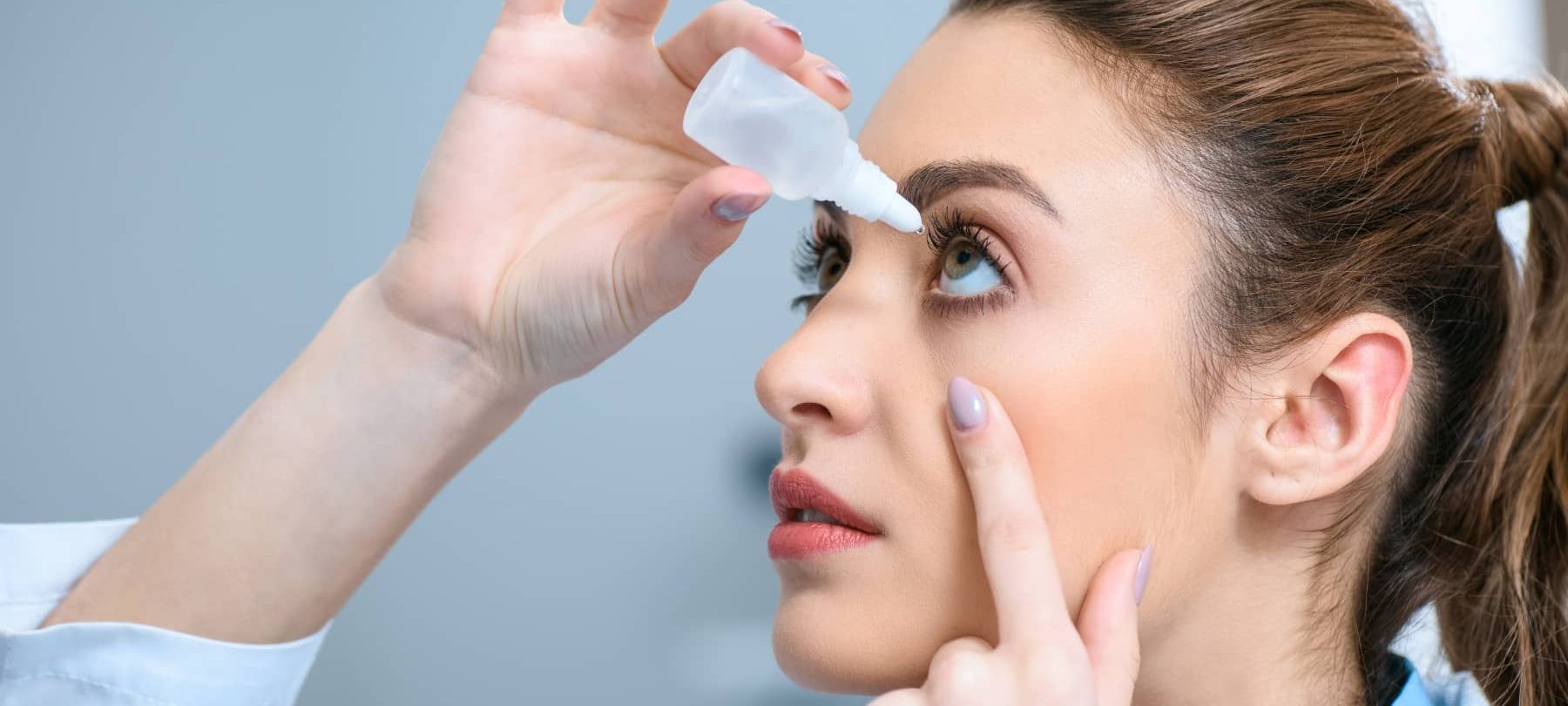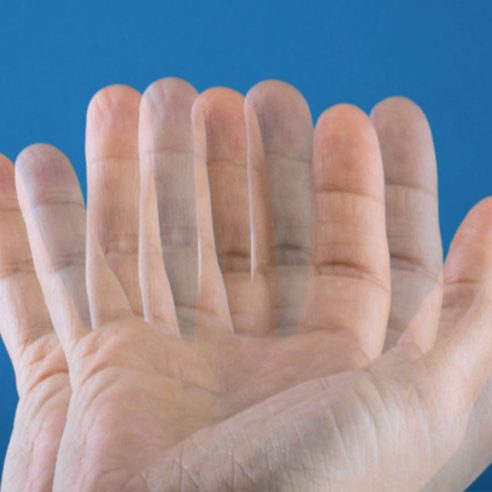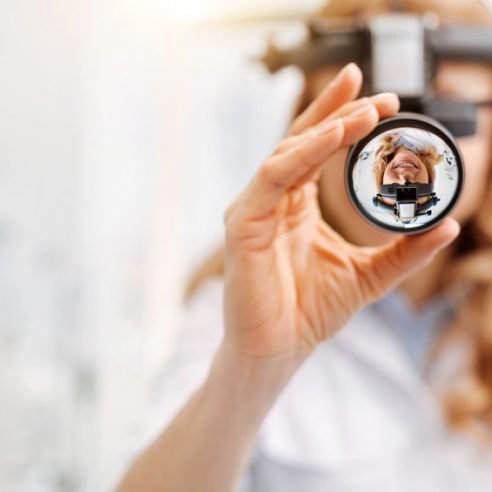
Dry eyes: What are the symptoms and treatment?
The sensation of “dry eyes” or “tired eyes” is known in medical terms as “dry keratoconjunctivitis” or “xerophthalmia”, and refers to a dysfunction of the tear film. It is a progressive disorder which, left untreated, can lead to loss of vision.
It is estimated that over 15% of people over 55 suffer from dry eye syndrome. Women are the most susceptible, the causes being hormonal changes (birth control pills, pregnancy, menopause).
What is tear film?
Tears are made up of amino acids, fats, sugars and minerals, and are spread out on the ocular surface when we blink, once every 5-10 seconds. Sometimes at a basic level, sometimes in larger quantities as an effect of irritants (foreign particles, dust, smoke, trauma, infection, strong psychological stimuli). Their role is to:
- clean;
- lubricate;
- and protect the eye against injury or infection.
The tear film has three layers, each performing essential functions:
1. Outer or oily layer
- It is produced by the Meibomian glands.
- Prevents tears from leaking from the eyes by stabilizing the tear film.
- Prevents evaporation of intraocular fluid.
2. Middle or watery layer
- It’s produced by the lacrimal glands.
- It represents 90% of the tear film volume.
- It has an antibacterial effect, cleansing the eye of bacteria and foreign particles.
- Supplies the corneal epithelium with nutrients and atmospheric oxygen.
3. Inner or mucus layer
- It is produced by the mucous membrane, present in the conjunctiva.
- Evenly distributes tear film and ensures a clear vision.
- Reduces pressure on the ocular surface.
What causes dry eyes?
Dry eye syndrome can occur for two reasons:
- A quantitative deficiency of the tear film, which in medical terms translates as “Sjongren’s Syndrome”. This autoimmune condition can also affect the secretion of other exocrine glands in the body (e.g. lacrimal, digestive, salivary glands) and can be a symptom of lupus, or ankylosing spondylitis.
- Tears evaporate too quickly from the surface of the eye because the oily layer of the tear film is produced in insufficient quantity. This means that the Meibomian glands are affected by trauma or burns to the eyelid margin, and cannot perform their functions properly.
Causes of reduced tear secretion:
- Vitamin A and Omega-3 deficiency;
- Long time in front of digital screens;
- Time spent in dry environments (air conditioning);
- Inflammation;
- Use of contact lenses;
- Trauma;
- Adverse effect of drug treatments;
- Adverse effect of surgery;
- Tumors;
- Thyroid diseases;
- Neurological diseases affecting blinking;
- Ectropion (Condition in which the eyelid margin is turned outwards. Requires surgery).
What are the symptoms of dry eye?
Dry eye syndrome can manifest itself through a variety of symptoms:
- Ochi uscați și roșii;
- Dry, red eyes;
- Stinging, twitching or burning sensation in the eyes;
- Dry and itchy eyes;
- Tired eyes;
- Sensation of sand in the eyes (foreign particles);
- Dry eyes in the morning;
- Viscous discharge at the eyelids level (but specialist examination is recommended as this symptom could also indicate conjunctivitis);
- Sensitivity to light and air flow;
- Heavy eyelid sensation;
- Excessive tearing, followed by episodes of dry eyes;
- Blurred vision;
- Difficulty driving at night;
- You no longer tolerate digital screens or activities that involve sustained gaze focus (e.g. reading);
- You can’t stand contact lenses.
How is dry eye syndrome treated?
When dealing with a tear film deficiency, artificial tears are the solution.
Dry eyes: drops
The treatment is eye drops – solutions or emulsions – designed to supplement the amount of natural tears; the two are similar in composition. Both natural tear film and eye drops have the same functions:
- Moisten the ocular surface;
- It cleanses it of impurities, giving better visual acuity;
- Protects it from infection.
- The main purpose of artificial tears is to prevent inflammation or damage to the cornea. They have no long-term adverse effects.
- Easy to administer.
- They are also available in spray form.
- It is recommended to consult a specialist before taking any type of treatment.
How can you prevent dry eye syndrome?
There are a few ways you can prevent dry eyes.
- Use air dehumidifiers both at work and at home.
- Avoid cold air flow directly into the eyes (e.g. fans, air conditioning – in transport vehicles or at home)
- Neither active nor passive smoking is recommended.
- Wear sunglasses so your eyes don’t come into direct contact with wind, sun or dust particles.
- Wear safety glasses when spending time in front of digital screens.
- If you are working at a computer or engaged in long-lasting activities that require visual concentration, place the screen below eye level to reduce tear evaporation; take regular breaks. It is recommended that once every 30 minutes you look at the farthest point of the room for 5-10 seconds; try to disconnect completely for 30 minutes during a longer break (e.g. when eating lunch); close your eyes intermittently and intensely to help evenly distribute tear film across the eye surface; take your eyes away from the screen periodically.
- If you spend time in a dry environment (e.g. air-conditioned rooms, in the mountains, in arid areas), close your eyes regularly for a few minutes to reduce tear evaporation.
- Use artificial tears to keep eyes lubricated and moisturized.






























